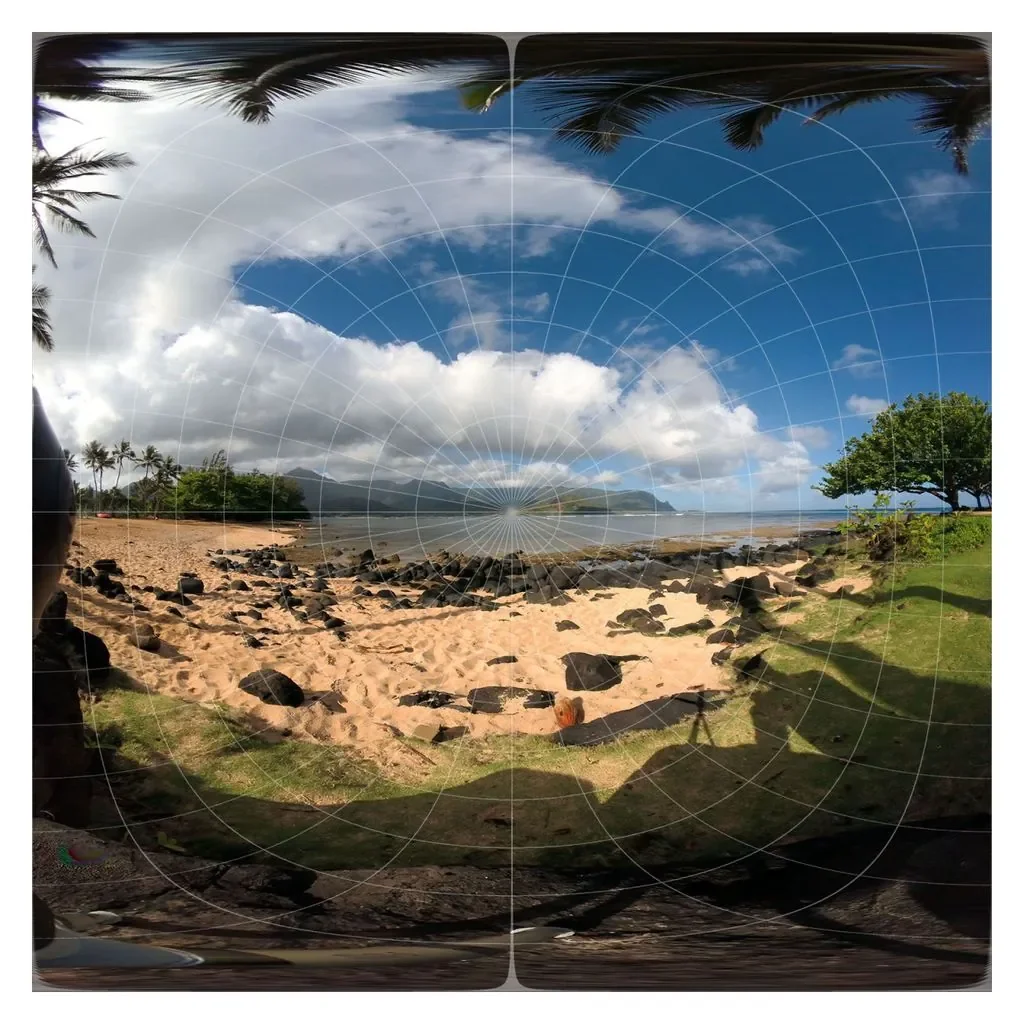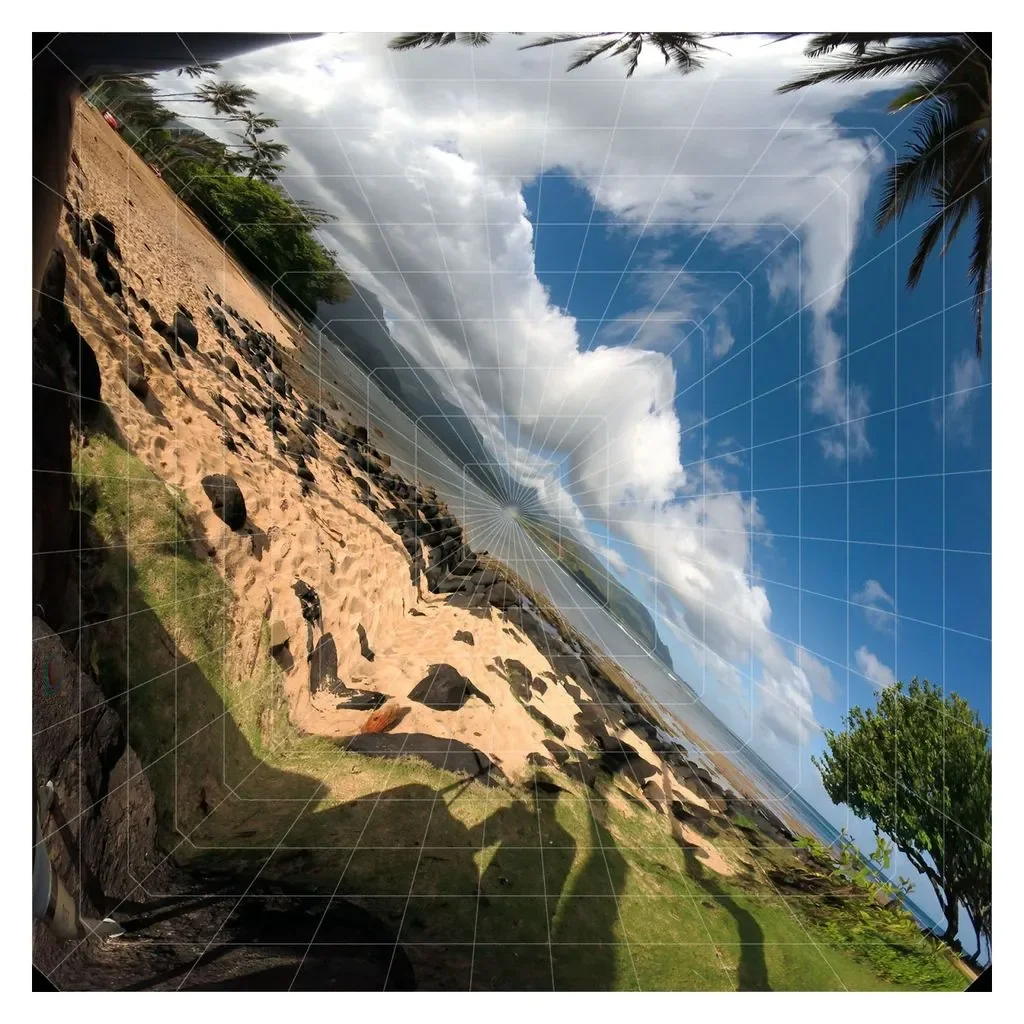Currently, the capability to capture spatial videos is limited to iPhone 15 Pro and iPhone 15 Pro Max models running iOS 17.2 or higher. Users can revisit their memories in three dimensions on the Apple Vision Pro headset.
Spatial videos captured on the iPhone 15 Pro and iPhone 15 Pro Max are in 1080p / 30 fps SDR format. The size of a one-minute spatial video is approximately 130 MB (compared to approximately 65 MB for a one-minute 1080p / 30 fps standard video).
Transforming 2D videos into hemispherical or spherical projection images presents many challenges in immersive experiences. The most common method for this is using a 180-degree fisheye lens.
The conventional method involves splitting the video in a specific way, allowing it to be stretched into a horizontal and vertical virtual sphere suitable for a user's 180-degree field of view. However, this approach may result in the corners and edges not being effectively utilized, leading to inefficient data usage.

Another alternative method to eliminate the black areas is the 180-degree equi-angular projection. Created through editing, it can distort the image to fill the entire rectangular frame. However, this method also has a drawback: it is challenging to retain details in each 180-degree viewing angle.

Apple employs a unique construction algorithm that encodes fisheye content rotated at 45 degrees, placing the field of view diameter on the diagonal. This not only allows for more visible pixels but also improves data utilization rates.

For the viewer, the benefit of this approach is that the "horizon" of the field of view has the most pixels. Since most people focus on the horizon when watching videos, retaining the details in this area is crucial for the viewing experience.
Source: IT Home

